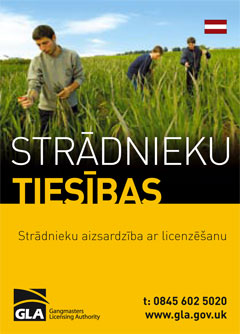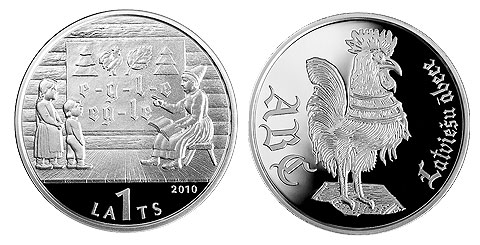Twenty years ago a Latvian prime minister and foreign minister met with an American president in the Oval Office of the White House. It was July 30, 1990, and Latvia was still an occupied country. Why did President George H.W. Bush meet with Ivars Godmanis and Jānis Jurkāns a year before Latvia restored its independence, and why does it matter today?
The story begins on May 4, 1990, when the Latvian Supreme Council voted to restore Latvia’s independence, and chose Ivars Godmanis to head the government that hoped to make that goal a reality.
As the Washington, D.C., lobbyist for the American Latvian Association (ALA), I had worked with Godmanis since his days at the Popular Front, and met with him in Rīga again in June to discuss how the ALA could support the new government. The Latvian independence movement had taken a bold step forward, now had a government to work with, and needed international support to realize its goals. As we strolled through the Esplanade out of earshot of microphones in the Cabinet of Ministers building, Godmanis and I agreed that he and his Foreign Minister Jānis Jurkāns needed to come to Washington. We planned it for the last week in July.
As far as Moscow was concerned, Latvia was still a Soviet Socialist Republic at the time. The powers that be in Washington, D.C., disagreed. The U.S. had never recognized the legality of Soviet rule in Latvia, and thus had never recognized any of the Soviet government officials that claimed to represent Latvia. Technically, Godmanis and Jurkāns were also Soviet Latvian government officials because they had acquired their positions by the rules of the Soviet system they were imprisoned in.
But Godmanis and Jurkāns represented a government that was pulling away from the Soviet yoke and was moving toward the restoration of the Republic of Latvia that had first been established in 1918. Latvia had established diplomatic ties with the U.S. in 1922 and its legation in Washington, D.C., was still recognized by the U.S. as Latvia’s only legal representative. In 1990 the legation was headed by Charges d’affaires Anatols Dinbergs, a career Latvian diplomat who first came to the U.S. in 1939 and continued to serve his country as a diplomat in exile for more than 50 years.
While Dinbergs was sympathetic to the goals of the Godmanis’ government, he could not officially represent it because it was still under Soviet control. Since the legation couldn’t organize the visit, that responsibility fell to the ALA. I booked a hotel room, rented a car, set up an itinerary and did my best to drum up inside-the-beltway interest for the visit of two Latvian statesmen from behind the Iron Curtain.
During a whirlwind week in Washington we met with congressmen, senators, foreign policy experts and think tank pundits. Godmanis appeared on CNN and even the State Department rolled out a diplomatically nuanced carpet for a meeting with the prime and foreign ministers of a government that was defying the Union of Soviet Socialist Republics.
It had never occurred to us to hope for a meeting at the White House with Bush until we met with Sen. Robert Byrd, a Democrat and one of the most distinguished elder statesmen in the U.S. Senate. I note with sadness the recent passing of Sen. Byrd, because it was his feistiness that put Latvia in the White House that week. During our meeting, the silver-haired senator from West Virginia asked us when we were going to meet with President Bush. We said no such meeting was scheduled. Byrd said: “Nonsense, I’ll make a call.”
And so he did. Later that evening I got a call from one of Sen. Byrd’s aides telling me that a White House meeting with the president was set for next week.
I was not only the chauffeur for Godmanis and Jurkāns, but also their advisor and escort, and on July 30, 1990, the three of us entered the gates of the White House and were ushered into the Oval Office for a 15-minute “courtesy visit: with President Bush. The meeting lasted 40 minutes and when we faced the press outside the West Wing doors, it was clear that Latvia had moved another step closer to full independence.
Many criticize President Bush for taking so long to restore full diplomatic relations with Latvia in 1991 (the U.S. was the 27th country to do so). But many forget that a year earlier, in 1990, President Bush extended a hand of support to all three Baltic countries in their quest for independence. That same summer he met with Lithuanian Prime Minister Prunskienė and Estonian Prime Minister Savisaar. These highly visible meetings brought media attention and sent unmistakable political signals to capitals around the world. Not only Moscow, but the rest of the international foreign policy community got the message: the U.S. was prepared to stand behind the people and governments that sought to restore their independence in Latvia, Lithuania and Estonia.
While this may seem like ancient history to some, it does undermine the old cliché that in international relations “there are no friends, just interests.” I guess we can speculate on the interests that prompted the late Byrd, a senator from the Democratic Party, to convince a president from the Republican Party, to meet with two upstarts from Latvia who were defying the Communist Party. But I saw it as an act of friendship.
And so, when I read tributes to Byrd, the longest-serving member of the Congress in the history of the United States, I think about how once, a good friend helped Latvia make a little history, too.





